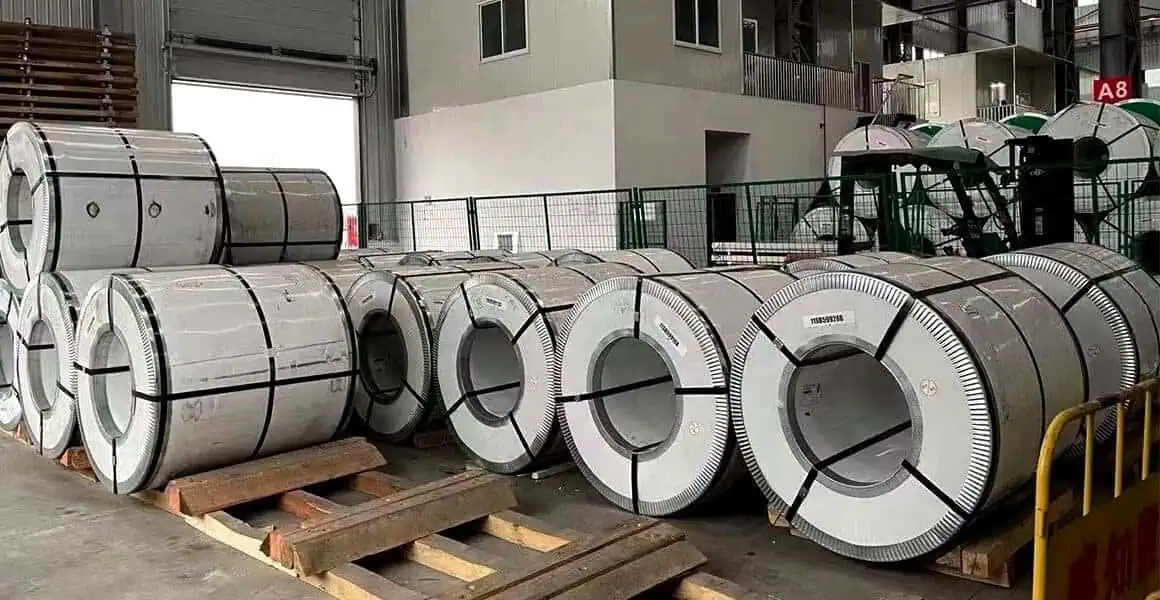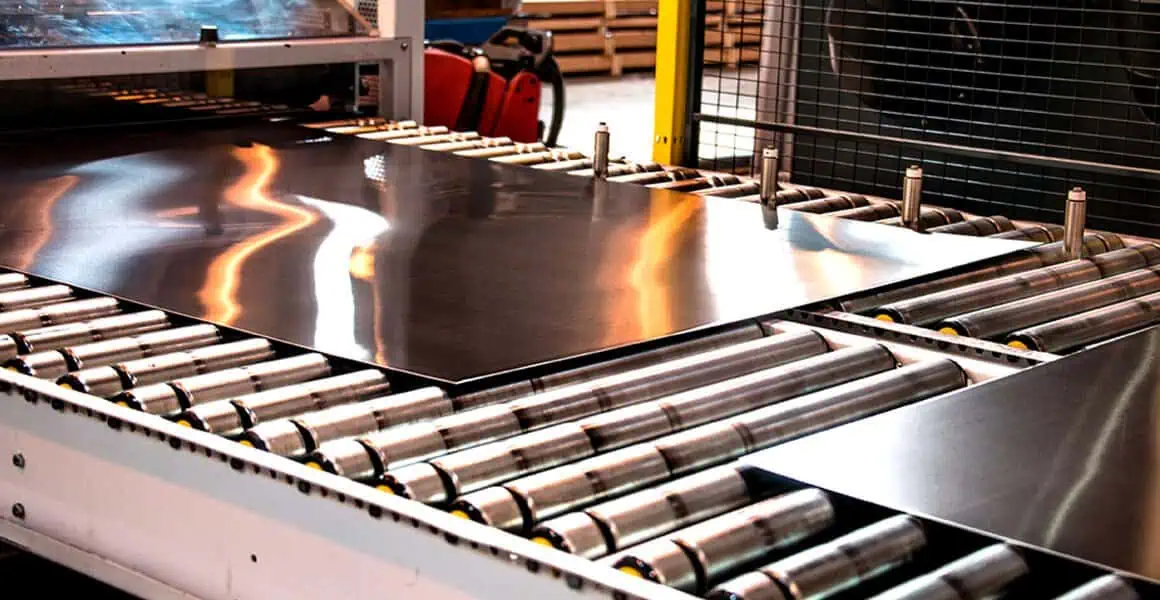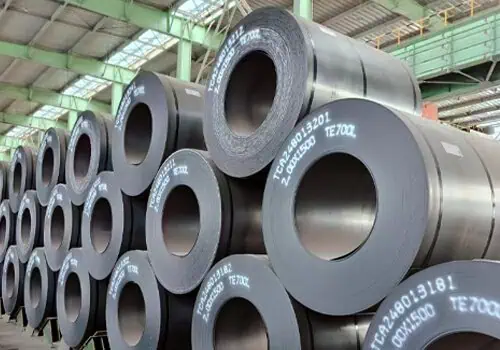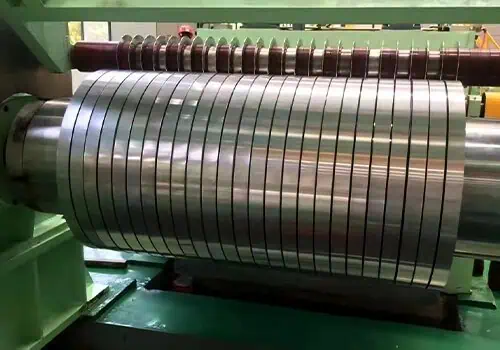Deciding on the right stainless steel alloy – 304 or 316 – can have a big impact on your business. Here’s a detailed analysis to help you make the best decision based on your application, quality, and price requirements. Whether you’re dealing with food-grade materials, marine applications, or industrial equipment, it’s important to understand the key differences between these two stainless steel alloys.
304 e 316 aço inoxidável are both widely used, but 316’s enhanced corrosion resistance (due to molybdenum) makes it better for harsh environments like marine or chemical industries. 304, while more affordable, is better for less demanding applications. The choice depends on your client’s needs, environmental factors, and budget constraints.
In order to understand the actual differences between 304 e 316 aço inoxidável, let’s take a more detailed look at their individual characteristics and ideal applications. Armed with this knowledge, you can help guide your customers toward the right material for their needs.

What is 304 Stainless Steel?
304 stainless steel is the most widely used alloy in the world, known for its strength and durability. It’s also praised for its outstanding resistance to disintegration. It’s a highly versatile material that can be used in a wide range of applications across many different industries. This alloy has been proved to work well in a variety of situations, from residential kitchens to large, industrial machinery.
Com 18% chromium and 8% nickel, 304 stainless steel offers excellent oxidation and corrosion resistance in most environments. It is a great material for use in food processing areas, automotive trim, and many other applications.
You find 304 aço inoxidável virtually everywhere you look. Typically, it is selected for the right balance of quality and price. It offers adequate corrosion resistance in most environments. So, indoors, in food processing applications, and in the manufacture of consumer goods, 304 works well. However, when exposed to salt in the air or just regular ocean mist, the corrosion resistance of 304 can be compromised. It may work well for cookware, sinks, and kitchen appliances, but might not be the best material for a large boat anchor or sculpture exposed to the elements. Stockists can use this information when sourcing materials for customers located in mild environments.

What is 316 Stainless Steel?
316 stainless steel is similar to 304 stainless steel but has the addition of molybdenum, which makes it an excellent choice for use in highly corrosive environments. The addition of molybdenum helps to improve the alloy’s resistance to saltwater and other similar corrosive elements. That’s why 316 stainless steel is the go-to material in marine and chemical applications.
316 stainless steel contains 16% chromium, 10% nickel, e 2% molybdenum. The molybdenum adds even more corrosion resistance, especially against chlorides and sulfuric acid. This alloy is ideal for use in extreme conditions such as saltwater, extensive exposure to industrial chemicals, and more.
316 stainless steel’s ability to withstand corrosion from saltwater and chemicals makes it ideal for use in applications such as marine, pharmaceutical, and chemical industries. It’s commonly used in the production of medical devices, food processing machinery, and marine components like boat fittings and pipes. The addition of molybdenum makes it much more expensive, but it’s also substantially more durable in harsh environments. For those targeting these specialized markets, 316 stainless steel is a premium, but often necessary, choice for a long-lasting solution in extreme conditions. The durability often justifies the higher price, especially in markets where safety and long-term performance are key.

Key Differences in Corrosion Resistance
When it comes to corrosion resistance, the difference between 304 e 316 stainless steel is dramatic. Let’s take a closer look at how each of these alloys performs in different corrosive environments. 304 stainless steel has good general corrosion resistance, but 316 is built for a more aggressive, chemical-centric corrosion resisting situation.
304 stainless steel resists corrosion from many household chemicals, but it struggles when in chloridated environments. In contrast, 316 aço inoxidável, because of its molybdenum content, will resist corrosion from a wider variety of chemicals, including many industrial chemicals and chlorides CGRect. It is commonly used in more industrial or marine applications.
304 stainless steel is great for environments with low exposure to chloride, like food processing or mild indoor applications. However, in tough conditions such as saltwater or direct acids, 304 can corrode quickly. For example, a 304 stainless steel kitchen sink would rust over time when exposed to saltwater, but 316 would resist corrosion much longer. Traders providing steel to industries such as construction, food manufacturing, and general household use may find that 304 is more suitable for their customers, while those supplying steel to industries working with marine equipment or chemicals may benefit from the superior corrosion resistance of 316.

Applications of 304 Stainless Steel
The 304 stainless steel is the most popular of the stainless steels. It is available in fabulous applications due to various reasons including versatility, relação custo-benefício, and moderate corrosion resistance. Let us look in detail about where and why we use this type of steel in different industries.
We see 304 stainless steel used in many different industries, from kitchen equipment to structural applications. It’s easy to form and weld, making it great for high-speed production like mass-market products or smaller-scale projects.
Some of the most common applications for 304 stainless steel include food processing equipment, kitchen appliances, heat exchangers, and architectural applications. Steel distributors will often suggest this grade for applications where one does not need very high resistance to corrosive environments and where cost is a significant factor.
However, if you’re in an industry that needs a long-lasting solution in mild conditions, then 304 stainless steel can more than adequately get the job done. The fact that it can handle high heat makes it perfect for certain heat exchangers and industrial processing equipment. Also, because of its relatively lower price point, it’s often utilized in construction and interior design applications.
304 is commonly used in the automotive and transportation industries for applications such as exhaust systems, catalytic converters, and structural components. Its strength, formability, and resistance to general corrosion make it a reliable alloy for a wide range of applications.

Applications of 316 Stainless Steel
316 stainless steel is designed for use in environments where superior corrosion resistance is necessary, such as the marine, medical, and pharmaceutical industries. With its increased resistance to chlorine, acids, and other chemicals, it’s the best option when dealing with highly corrosive environments.
316 stainless steel is used for applications in high-stress environments, such as marine, chemical processing, and medical devices, where it is valued for its resistance to chlorides and other corrosive substances.
The exceptional corrosion resistance of 316 stainless steel makes it the material of choice for industries such as marine engineering, where exposure to saltwater is a constant reality. It is similarly used extensively in food processing and pharmaceutical companies requiring hygienic, corrosion-resistant materials. By offering 316 aço inoxidável, traders in these industries can assure their customers of long-lasting reliability, even in the most severe environments. Precise applications like surgical instruments, marine vessels, and chemical reactors all benefit from 316’s extended lifespan and performance.
316 is also a critical material for medical instruments, implants, and other healthcare-related items because it does not react with body fluids or tissues. It is often used in situations where contamination needs to be avoided, making it a great option for manufacturing cleanroom equipment and food processing machinery.

Price Considerations: 304 vs. 316 Stainless Steel
While 316 stainless steel offers superior durability and resistance, it comes with a higher price tag. We’ll look at how to balance cost and quality when choosing between 304 e 316. It’s critical for traders to know how to explain this price difference to their customers in order to make the right sale.
304 stainless steel costs less than 316 aço inoxidável, but 316’s enhanced corrosion resistance justifies the additional cost in certain applications. The user’s purpose and budget determine their selection.
When sourcing stainless steel, steel traders must consider both the price and performance requirements of their clients. While 304 stainless steel is more affordable and suitable for less demanding applications, 316 stainless steel’s higher price is often justified by the long-term value it provides in harsh environments. For projects involving food processing or medical applications, investing in 316 is often worth the extra cost, as its corrosion resistance ensures better performance and fewer maintenance costs in the long run. Traders should guide their clients in understanding how the initial higher cost of 316 can save on repairs and replacements over time.
Traders should also keep in mind that while 304 may be the more affordable option for some applications, the lower initial cost can be misleading if the alloy fails prematurely in harsh conditions. For industries like chemicals or pharmaceuticals, 316’s higher cost is justified by the materials’ superior resistance to aggressive chemicals, which helps reduce replacement costs and downtime.
How to Choose Between 304 e 316 Stainless Steel?
Choosing between 304 e 316 stainless steel is a complex decision that involves more than just price. Let’s summarize the key factors to consider when making this important choice for your clients.
When choosing between 304 e 316 aço inoxidável, you’re going to look at the environmental exposure to that application. You’re going to look at your customer’s budget. You’re also going to look at the longterm durability needs of the project.
Traders must work closely with their customers to understand the nuances of their projects. For applications in a marine environment, such as a boat dock, 316 stainless steel is ideal because of its corrosion resistance to salt water. But in non-corrosive environments, 304 stainless steel could be the answer to saving the customer some money while still providing a tough, long-lasting product.
Being able to offer both products is an excellent way to serve a diverse set of industries. You’ve got to look at each project independently. How much exposure is there to chemicals? What are the customer’s expectations for the lifespan of the product? It all comes down to a judgment call on where the balance is between quality and value.
For example, let’s say you’re working on a construction project in a city on the coast where the materials are constantly exposed to saltwater. You may use 316 stainless steel for its longevity under those conditions. On the other hand, a company that manufactures food locally may be perfectly fine using 304 aço inoxidável. If you’re a trader, it’s all about understanding the needs of your customers and being able to offer them the right solution.
Summary
When deciding between 304 e 316 aço inoxidável, it’s a balance of cost versus performance. By understanding the differences, you can make a more informed decision and offer the right material for the job. Whether you need to think about cost, resistência à corrosão, or longterm durability, make the right choice, and your project will stand the test of time.






